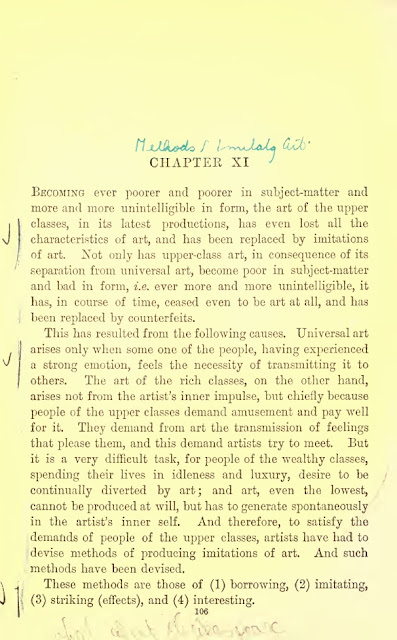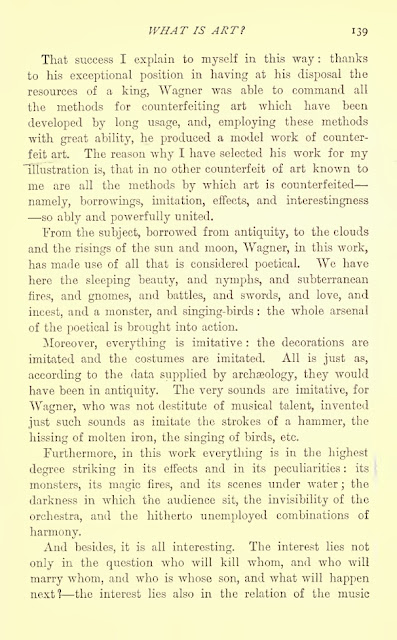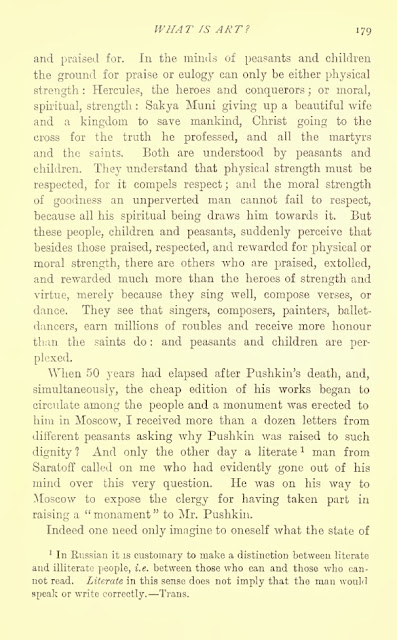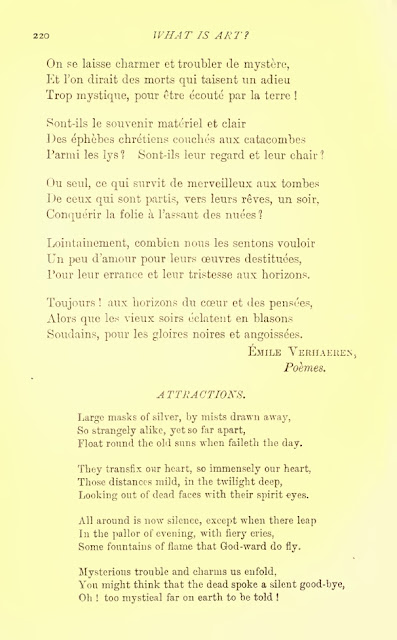"What Is Art?" (Russian: Что такое искусство? [Chto takoye iskusstvo?]; 1897) is an essay by Leo Tolstoy in which he argues against numerous aesthetic theories which define art in terms of the good, truth, and especially beauty. In Tolstoy's opinion, art at the time was corrupt and decadent, and artists had been misled.
According to Tolstoy, art must create a specific emotional link between artist and audience, one that "affects" the viewer. Thus, real art requires the capacity to unite people via communication (clearness and genuineness are therefore crucial values). This aesthetic conception led Tolstoy to widen the criteria of what exactly a work of art is. He believed that the concept of art embraces any human activity in which one emitter, by means of external signs, transmits previously experienced feelings. Tolstoy offers an example of this: a boy that has experienced fear after an encounter with a wolf later relates that experience, infecting the hearers and compelling them to feel the same fear that he had experienced—that is a perfect example of a work of art. As communication, this is good art, because it is clear, it is sincere, and it is singular (focused on one emotion).
However, genuine "infection" is not the only criterion for good art. The good art vs. bad art issue unfolds into two directions. One is the conception that the stronger the infection, the better is the art. The other concerns the subject matter that accompanies this infection, which leads Tolstoy to examine whether the emotional link is a feeling that is worth creating. Good art, he claims, fosters feelings of universal brotherhood. Bad art inhibits such feelings. All good art has a Christian message, because only Christianity teaches an absolute brotherhood of all men. However, this is "Christian" only in a limited meaning of the word. Art produced by artistic elites is almost never good, because the upper class has entirely lost the true core of Christianity.
Furthermore, Tolstoy also believed that art that appeals to the upper class will feature emotions that are peculiar to the concerns of that class. Another problem with a great deal of art is that it reproduces past models, and so it is not properly rooted in a contemporary and sincere expression of the most enlightened cultural ideals of the artist's time and place. To cite one example, ancient Greek art extolled virtues of strength, masculinity, and heroism according to the values derived from its mythology. However, since Christianity does not embrace these values (and in some sense values the opposite, the meek and humble), Tolstoy believes that it is unfitting for people in his society to continue to embrace the Greek tradition of art.
Among other artists, he specifically condemns Wagner and Beethoven as examples of overly cerebral artists, who lack real emotion. Furthermore, Beethoven's Symphony No. 9 cannot claim to be able to "infect" its audience, as it pretends at the feeling of unity and therefore cannot be considered good art.
















































































































































































































































































